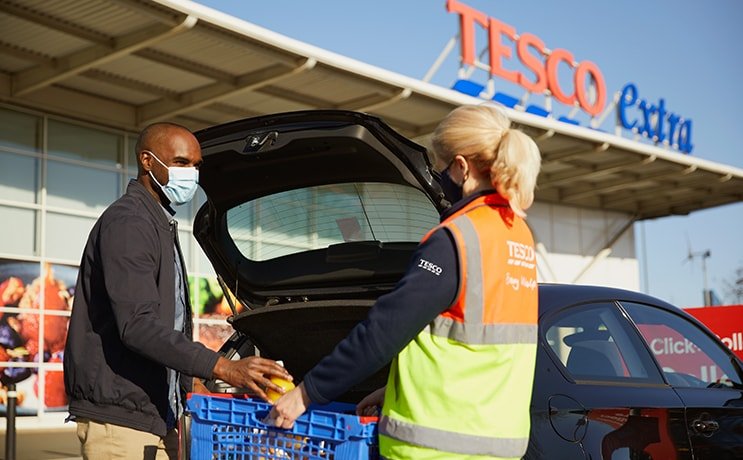Four learnings from Tesco’s experiences with MFC
© Tesco quarterly earnings presentation 10/2019
Over the last years Micro Fulfilment Centers (MFC) have emerged as an exciting opportunity for grocery retailers to improve their efficiencies with the online channel. One of the first major grocers to start adopting MFCs was UK grocer Tesco back in late 2019.
Last week Tesco gave some light on their experiences with building up of their MFC capabilities. The company calls the system Urban Fulfilment Centers (UFC). Tesco UFC’s are being built by Takeoff technologies.
Here is a summary of four main points from Tesco.
Slower and more expensive to build
In October 2019 former Tesco CEO Dave Lewis unveiled plans to build a network of 25 UFCs within existing stores. The network was supposed to be ready by 2023.
Only six months later Covid disrupted these plans. Currently Tesco has two UFCs running and is about to open a third one. The company has plans for opening four more UFCs in 2023 increasing the total to seven.
According to the CEO Ken Murphy, the UFC have turned out to be more expensive than the company had initially planned.
In an earlier earnings report Tesco has stated that an average UFC costs between £5M and £5,5M to build.
Capacity alongside efficiency
As the pandemic has dramatically changed the online grocery markets, the strategic need for the UFCs has changed. Initially the UFCs were only about improving efficiency and reducing costs. Today they are also very important for Tesco to increasing the online capacity of the company.
© Tesco
Since the launch of the UFC project in 2019, Tesco’s order volumes have increased from around 500 000 orders per week to 1,2 million orders per week. Additionally as Tesco has become more and more interested in Click & Collect as a way to both add capacity for online and reduce the costs, UFC can be helpful in cutting down the time from the order to fulfilment.
The UFC can assemble an order in seven minutes. That could enable really fast Click & Collect services.
Small assortment for traditional online, big for Quick commerce
One challenge for Tesco has been the size of the assortment that a UFC can handle. It can incorporate only some part of the assortment and Tesco seems to hope that it could handle more. Additionally some categories, such as all frozen products, are picked manually inside the store. To optimise further the UFCs, Tesco wants them to cater bigger assortments.
© Tesco
However, the assortment that the UFC can carry, can be regarded as big for Tesco’s quick commerce solution Whoosh or for the partnership with Gorillas. In Quick commerce generally the assortments tend to range around 2 000 products. UFC could enable Tesco to offer 10 000+ products for really rapid delivery. This could be a significantly differentiated value proposition in the Quick commerce space. The core enabler of speed for the Quick commerce players has been the small assortment, which enables the companies to have small dark stores where picking is done in a matter of minutes.
Nine months to full speed
© Tesco
Tesco also gave an example of how long it takes for a UFC system (Tesco’s 1st in West Bromwich) to start running at full capacity.
During the first months the system was able to put together 200 orders per day.
After six months the capacity had risen to 500 daily orders.
The system reached it’s full potential in nine months after the launch with 650 orders per day fulfilled.
The second UFC in Lakeside in West Thurrock will be able to handle 1 000 orders per day. This is approximately the same capacity as the biggest stores do with manual store picking.




